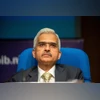)
Shaktikanta Das, RBI Governor (Photo: Shutterstock)
Banks could be a target for short sellers as stress in the global commercial real estate sector can cause liquidity squeezes, Reserve Bank of India Governor Shaktikanta Das cautioned on Monday.
Delivering a speech at the Future of Finance Forum 2024 organised by the Bretton Woods Committee, Singapore, Das said stress in the global commercial real estate (CRE) sector needs to be watched closely.
“Banks exhibit high sensitivity to expected and unexpected CRE losses, due to the relatively high CRE coverage ratios in their loan books. Further, liquidity squeezes can materialise for banks with large CRE exposures, as short sellers may target them and investor confidence may slip further,” the RBI governor said while commenting on global financial stability risks.
He emphasised that regulators should stay alert and undertake forward-looking regulatory measures ahead of the curve to contain the risks to bank balance sheets and systemic stability.

In India, bank lending to the commercial real estate sector was 22.8 per cent as on June 28, 2024, to Rs 4.21 trillion. This was higher than non-food credit, which grew by 13.9 per cent. The figures exclude the impact of the merger of HDFC with HDFC Bank, which came into effect from July 1, 2023.
Commenting on inflation in the Indian context, he indicated that the central bank is in no rush to cut interest rates despite inflation easing.
“Inflation has moderated from its peak of 7.8 per cent in April 2022 into the tolerance band of +/- 2 per cent around the target of 4 per cent, but we still have a distance to cover and cannot afford to look the other way,” he said.
Retail inflation – the central bank’s main yardstick for policy-making – was below the RBI’s target of 4 per cent for two consecutive months – July and August.
India’s inflation edged up slightly to 3.65 per cent in August from a revised 3.6 per cent in July, data released on Thursday showed, as a favourable base from the previous year helped keep prices under check despite a mild uptick in food inflation. Headline inflation stayed below the RBI’s upper tolerance limit of 6 per cent for the twelfth straight month.
“The Reserve Bank’s projections indicate that inflation is likely to ease further from 5.4 per cent in 2023-24 to 4.5 per cent in 2024-25 and 4.1 per cent in 2025-26,” Das said.
After raising the policy repo rate by 250 bps between May 2022 and February 2023, the central bank has maintained the status quo since then. The next policy review meeting is scheduled for October 7-9.
Das said the Indian economy rebounded from the severe contraction imposed by the COVID-19 pandemic and averaged real GDP growth of above 8 per cent during 2021-24.
For 2024-25, the Reserve Bank of India (RBI) projects real GDP growth at 7.2 per cent, with risks evenly balanced around this forecast.
“This growth outlook reflects the underlying strength of India’s macro-fundamentals, with domestic drivers – private consumption and investment – playing a major role,” he said, adding the growth trajectory is supported by an environment of macroeconomic and financial stability.
First Published: Sep 13 2024 | 8:07 PM IST





